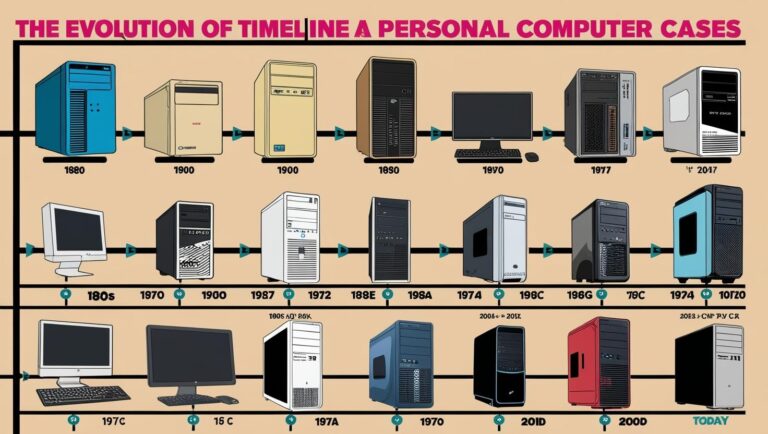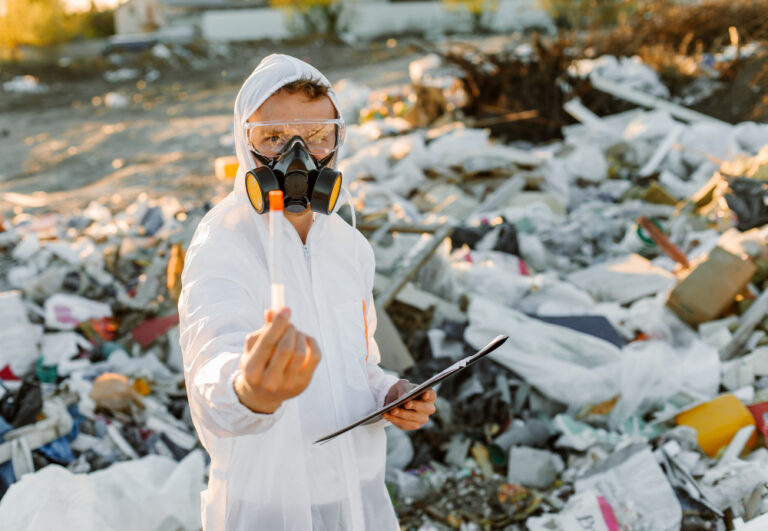
The rapid pace of technological innovation has undeniably transformed our lives, offering unprecedented convenience, connectivity, and efficiency. However, this relentless cycle of upgrade and obsolescence has a darker, often overlooked side: the significant Environmental Impact of Outdated Technology disposal. As consumers and businesses continually replace their devices, a tidal wave of discarded electronics, known as e-waste, floods landfills and recycling streams worldwide.
The proper management of e-waste disposal is not merely a logistical challenge; it is an urgent environmental imperative, as the environmental impact of e-waste poses severe threats to ecosystems, human health, and resource sustainability. Understanding the full scope of this issue is crucial for fostering responsible electronic waste management and promoting effective technology recycling practices to mitigate the profound impact of outdated technology.
The Growing Mountain of E-Waste: A Global Challenge
E-waste, also known as electronic waste, includes old, unused, or discarded electrical and electronic devices that are no longer in use. It encompasses everything from smartphones, laptops, televisions, and refrigerators to medical equipment and industrial machinery.
The amount of e-waste produced worldwide is immense and continues to increase at a rapid pace each year. According to the Global E-waste Monitor, the world generated a record 53.6 million metric tonnes (Mt) of e-waste in 2019, an increase of 21% in just five years. This figure is projected to reach 74 Mt by 2030, nearly doubling in just 16 years. This makes e-waste the world’s fastest-growing domestic waste stream, primarily due to:
- Decreasing Device Lifespans: Products are designed with shorter lifespans, sometimes due to planned obsolescence, encouraging frequent upgrades.
- Increased Consumption: More people in developing nations are gaining access to electronics, and developed nations maintain high consumption rates.
- Lack of Repairability: Devices are often designed to be difficult or expensive to repair, pushing consumers towards replacement.
This immense volume of discarded electronics underscores the critical nature of addressing the impact of outdated technology on a global scale.

The Toxic Brew: Hazardous Materials in E-Waste
One of the primary reasons for the severe environmental impact of e-waste is the cocktail of hazardous materials contained within electronic devices. Modern electronics are complex assemblies of hundreds of different substances, many of which are toxic and dangerous.
Key Hazardous Components:
- Lead: Found in CRT monitors, solder, and batteries. Neurotoxin, developmental problems in children.
- Mercury: Used in fluorescent lamps, older LCD screens, and switches. Neurotoxin, damages kidneys and brain.
- Cadmium: Present in older CRT screens, batteries, and some older circuit boards. Carcinogen, causes kidney damage.
- Chromium (Hexavalent): Used in corrosion protection. Carcinogen, respiratory problems.
- Brominated Flame Retardants (BFRs): Applied to plastics and circuit boards to prevent fire. Persistent organic pollutants, endocrine disruption, developmental issues.
- Barium: Found in CRT screens. Damages heart and nervous system.
- Beryllium: Used in connectors and springs. Carcinogen, chronic beryllium disease.
- PVC (Polyvinyl Chloride): Used in cables and plastic casings. Releases dioxins and furans when burned, highly toxic.
When these materials are dumped in landfills or improperly processed, they leach into the soil and groundwater, contaminating ecosystems and entering the food chain.
The burning of e-waste, a common practice in informal recycling sectors, releases highly toxic fumes into the atmosphere, directly affecting air quality and human health. This uncontrolled release of pollutants is the most immediate and devastating aspect of the environmental impact of e-waste disposal.
Resource Depletion and Energy Consumption
Beyond toxicity, the impact of outdated technology also extends to resource depletion and energy consumption. Electronic devices are rich sources of valuable raw materials, both precious and base metals.
Valuable Materials in E-Waste:
- Precious Metals: Gold, silver, platinum, palladium. These are highly sought after due to their conductivity and resistance to corrosion.
- Base Metals: Copper, aluminum, iron.
- Rare Earth Elements: Used in displays, batteries, and magnets.
Extracting these virgin materials from the earth is an incredibly energy-intensive process that leads to:
- Habitat Destruction: Mining operations destroy natural habitats, leading to biodiversity loss.
- Water Pollution: Mining processes consume vast amounts of water and often pollute local water sources with heavy metals and chemicals.
- High Energy Consumption: Extracting and processing raw materials requires significant energy, contributing to greenhouse gas emissions and climate change.
When e-waste is not properly recycled, these valuable materials are lost forever, necessitating further virgin resource extraction. Effective technology recycling can recover a significant portion of these materials, reducing the demand for new mining and lessening the associated environmental devastation. This highlights how proper electronic waste management is crucial for a circular economy approach to resource use.
Social and Health Impacts of Informal E-Waste Recycling
While developed nations generate the bulk of e-waste, a significant portion of it is illegally or informally shipped to developing countries, particularly in Asia and Africa. Here, it is processed in informal recycling operations, often by impoverished communities, including children, who lack proper safety equipment or environmental controls.
Grim Realities of Informal Recycling:
- Exposure to Toxins: Workers are directly exposed to lead, mercury, cadmium, and other hazardous chemicals through inhalation of fumes from burning plastics, direct skin contact with acid baths used to extract metals, and ingestion of contaminated food and water.
- Health Consequences: This exposure leads to a wide range of severe health problems, including respiratory illnesses, neurological damage, reproductive issues, developmental delays in children, and various cancers.
- Environmental Devastation: The open burning, acid leaching, and indiscriminate dumping contaminate local air, soil, and water, rendering agricultural land unusable and poisoning water sources. Areas like Agbogbloshie in Ghana or Guiyu in China have become notorious for their environmental degradation and public health crises directly attributable to informal e-waste processing.
The ethical dimensions of this practice are deeply troubling, as the environmental burden and health risks are unfairly shifted from richer, consuming nations to poorer, vulnerable populations. This global injustice amplifies the urgency of responsible e-waste disposal and international cooperation on electronic waste management.
The Challenges of Electronic Waste Management
Implementing effective electronic waste management systems faces numerous hurdles:
- Complexity of E-Waste: Electronics are complex products made from a multitude of materials, requiring sophisticated processes for disassembly and separation.
- Lack of Infrastructure: Many regions, particularly in developing countries, lack the necessary infrastructure, technology, and trained personnel for safe and efficient e-waste recycling.
- Low Collection Rates: Globally, only an estimated 17.4% of e-waste was officially documented as collected and recycled in 2019. The vast majority ends up in general waste streams or is informally managed.
- Economic Disincentives: Proper, environmentally sound recycling can be more expensive than informal, unregulated methods, creating an economic incentive for illicit dumping or unsafe processing.
- Consumer Awareness and Behavior: Many consumers are unaware of the environmental impact of e-waste or lack convenient, accessible options for proper e-waste disposal.
- Transboundary Movement: The illegal shipment of e-waste across international borders complicates regulation and enforcement.
Solutions and the Path Forward: Towards a Circular Economy
Addressing the Environmental Impact of Outdated Technology requires a multi-faceted approach, moving beyond linear “take-make-dispose” models towards a circular economy for electronics.
- Extended Producer Responsibility (EPR): This principle holds manufacturers responsible for the entire lifecycle of their products, including their end-of-life management. EPR schemes incentivize manufacturers to design more durable, repairable, and recyclable products and to establish collection and recycling programs. Many countries have adopted EPR legislation, but enforcement and scope vary.
- Improved Design for Longevity and Recyclability:
- Modular Design: Products designed with easily replaceable components (e.g., batteries, screens).
- Reduced Toxic Materials: Phasing out hazardous substances where alternatives exist.
- Easier Disassembly: Designing products that can be easily taken apart to separate different material streams.
- Durability: Creating products that last longer, reducing the frequency of replacement.
- Enhancing Collection and Recycling Infrastructure:
- Accessible Drop-off Points: Establishing convenient collection centers for consumers.
- Take-back Programs: Retailers and manufacturers offering programs for customers to return old devices.
- Investment in Advanced Recycling Technologies: Developing and implementing state-of-the-art facilities that can safely and efficiently recover materials from complex electronics.
- Promoting Repair and Reuse:
- “Right to Repair” Legislation: Mandating that manufacturers provide access to spare parts, tools, and repair manuals to consumers and independent repair shops.
- Supporting Refurbishment Programs: Creating markets for used and refurbished electronics, extending their lifespan and reducing the demand for new products.
- Consumer Education: Encouraging consumers to repair rather than replace, and to donate or sell functional but unused devices.
- Consumer Education and Awareness: Raising public awareness about the environmental impact of e-waste and the importance of responsible e-waste disposal is paramount. Campaigns can educate consumers on where and how to recycle their electronics properly and encourage them to choose more sustainable products.
- International Cooperation and Enforcement: Strengthening international agreements like the Basel Convention to prevent the illegal transboundary movement of e-waste. Developing robust monitoring and enforcement mechanisms to hold offenders accountable.
- Data Security and Privacy: Addressing consumer concerns about data security when disposing of old devices is crucial. Clear guidelines and secure data wiping services must be offered to encourage responsible recycling.
The impact of outdated technology is a multifaceted challenge that requires a collaborative effort from governments, industry, and individual consumers. By embracing principles of the circular economy, investing in green technology, and fostering responsible consumer behavior, we can transform the problem of e-waste into an opportunity for resource recovery and environmental protection.
Conclusion
The Environmental Impact of Outdated Technology disposal is one of the defining ecological challenges of our time. The ever-growing mountain of e-waste, laden with toxic materials and valuable resources, represents a profound threat to our planet and public health. The environmental impact of e-waste is evident in contaminated land and water, polluted air, depleted resources, and the grave health crises unfolding in informal recycling communities.
Effectively addressing this requires a radical rethinking of our relationship with technology, moving beyond the linear consumption model. Through robust electronic waste management policies, innovative design for longevity and recyclability, accessible technology recycling infrastructure, and informed consumer choices regarding e-waste disposal, we can strive towards a circular economy where technology serves humanity without devastating the planet. The future of sustainable development hinges on our ability to manage the relics of our digital age responsibly, transforming a global problem into a pathway for a greener, healthier future.






